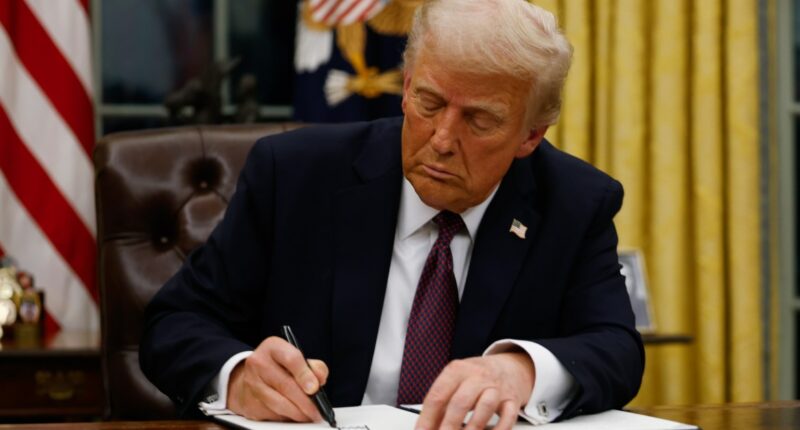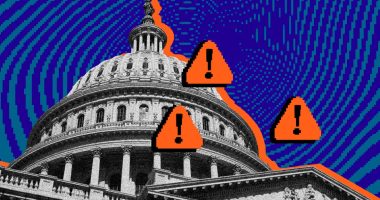Share this @internewscast.com
President Donald Trump is contemplating an executive order that could be signed as early as Friday, granting the federal government sweeping authority over artificial intelligence regulation. This order would establish an “AI Litigation Task Force,” managed by the attorney general, tasked specifically with challenging state AI laws.
According to a draft obtained by The Verge, this task force would have the power to sue states whose laws are considered to hinder the AI industry’s progress. Notably, it targets recent legislation in California concerning AI safety and “catastrophic risk,” as well as a Colorado law aimed at preventing “algorithmic discrimination.” The task force will periodically consult with White House special advisers, including billionaire venture capitalist David Sacks, who serves as a special adviser for AI and cryptocurrency.
In recent public appearances, including at the US-Saudi Investment Forum, Trump has vocalized his desire for a pause on state-level AI regulations, framing it as a counter to “woke” ideology. “You can’t go through 50 states. You have to get one approval. Fifty is a disaster. Because you’ll have one woke state and you’ll have to do all woke. You’ll be back in the woke business. We don’t have woke anymore in this country. It’s virtually illegal. You’ll have a couple of wokesters,” he remarked.
This proposed order ties back to the AI Action Plan Trump launched earlier this year, instructing federal agencies, including the FCC, to find ways to bypass restrictive state and local regulations to foster industry growth and innovation. The full executive order provides a 90-day plan for several pivotal agencies, such as the Department of Justice, the Federal Trade Commission, the Department of Commerce, and the Federal Communications Commission, to enact these strategies.
Under this order, the Commerce Secretary will be required to publish a report within 90 days that identifies states violating Trump’s AI policy directives. The report will also assess which states might lose eligibility for the Broadband Equity Access and Deployment (BEAD) program, which supports rural broadband access. Concurrently, the FTC will need to decide if states mandating AI companies to alter their algorithms would breach laws against unfair and deceptive practices.
FCC Commissioner Brendan Carr, speaking at Politico’s AI & Tech Summit in September, suggested a possible interpretation of the Communications Act that could enable the FCC to override state laws. “Effectively, if a state or local law is effectively prohibiting the deployment of this ‘modern infrastructure,’ then the FCC has authorities to step in there,” Carr explained to Politico’s Alex Burns.
Carr also brought up the possibility that the FCC’s regulatory powers could override a potential new law in California that would have required AI companies to disclose their safety testing models, saying that it would fulfill Trump’s goal of blocking “woke AI” that contained ideological biases.
He cited the European Union’s Digital Safety Act and raised his concern “their AI models are not going to be truth-seeking AI models, but they’re going to be woke AI models, going to be AI models that are promoting DEI. And so again, President Trump has, as part of his action plan, steps to make sure that we don’t have that type of woke DEI embedded AI models developing here. When it comes to California, again, not familiar exactly with all the intricacy of that, but to the extent that they’re moving in that direction and away from truth seeking, it could be a problem.”
The notion that the FCC should have veto power over state AI laws — as well as other parts of Trump’s order — could easily be challenged in court. But moves like the litigation task force could still throw up roadblocks to states regulating AI.
Punchbowl News reported on Wednesday that the executive order is the White House’s backup plan should Congress fail to pass a state AI law moratorium, this time via the upcoming reauthorization of the National Defense Authorization Act — a bill that absolutely must pass in order for the government to fund its national security apparatus.
Earlier this year, Congress attempted to slip a moratorium into a draft of Trump’s “Big Beautiful Bill” that laid out the spending for his second-term agenda, but it failed after a bipartisan group of senators voiced opposition to the act. Earlier this week, House Majority Leader Steve Scalise told Punchbowl News that Congress was considering a second run at a moratorium by attaching it to the NDAA.
But just like the Big Beautiful Bill fight, a moratorium buried inside the NDAA’s passage might run into opposition particularly if the punishment is the same: the withholding of rural broadband funding. “The real question is, how big of a grant does it take to put pressure on state lawmakers to change their AI regulations?” Adam Thierer, a senior fellow at the R Street Institute who had initiated the concept of an AI moratorium, told The Verge. “This came up in the previous moratorium fight and some people worried that California would just ignore BEAD-related budget threats, for example. It might take multiple budget revocations or limitations to really put pressure on a state as big as California.”








